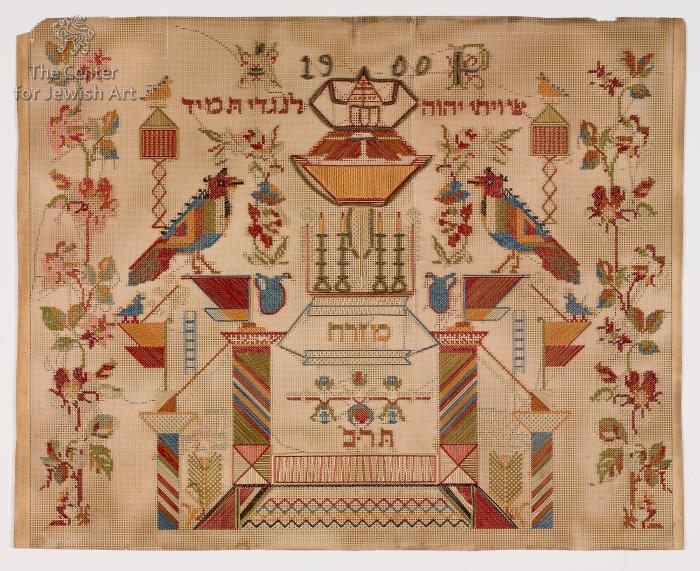Obj. ID: 39394 Mizrach, Eretz Israel, 1900

sub-set tree:
The following description was prepared by William Gross: Mizrah (Hebrew: מזרח "east") is the Hebrew word for "east" and the direction that Jews in the Diaspora face during prayer. Jewish law prescribes that Jews at prayer face the site of the Temple in Jerusalem. In addition, "Mizrach" refers to an ornamental wall plaque used to indicate the direction of prayer in Jewish homes. In a synagogue, that direction would be obvious as it is the side of the building on which the ark was placed. But in a home or Sukkah the direction had to be indicated. It is customary in traditional Jewish homes and the Sukkah to mark the wall in the direction of Mizrach to facilitate proper prayer. For this purpose, people use artistic wall plaques inscribed with the word Mizrach and scriptural passages like "From the rising (mi-mizrah) of the sun unto the going down thereof, the Lord's name is to be praised" (Ps. 113:3), Kabbalistic inscriptions, or pictures of holy places. Such plaques were most often manuscript forms or printed sheets, ranging from the simplest idea of the word only to elaborately decorated pages with a wide range of images and texts. These plaques are generally placed in rooms in which people pray, such as the living room or bedrooms. The four letters of the Hebrew word MiZRaCH are sometimes indicated as the initial letters of the Hebrew phrase Metzad Zeh Ruach CHaim (From this side the source of life).
These punched paper embroideries were very popular in the Holy Land in the last part of the 19th century. Quite a few are found in collections, usually illustrating the Kotel, and often dated. Other subjects used were the Akedat Yitzhak and the Mizrach, as in this example. But this use is rare.
Inscription: Shiviti Adonai le-Negdi Tamid


